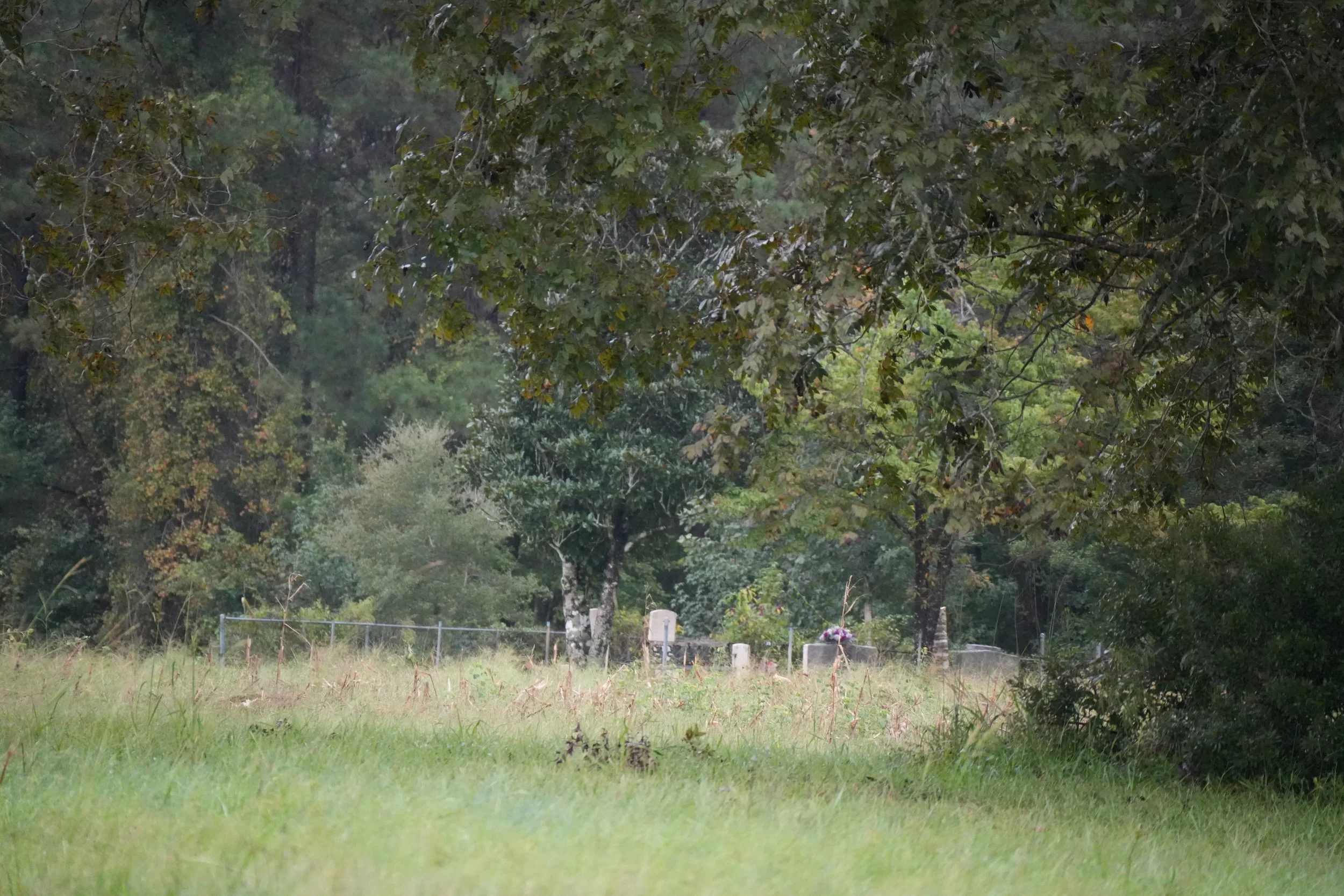A Tender Compass
A family cemetery at the old farm and former plantation
Rocky Point, North Carolina feels intimate even though it is mostly unfamiliar. It’s a place of family lore, known through mythology and cemetery headstones; stories told from the perspective of my southern family with a discomfiting mix of ancestral pride and shame. There’s a story that has had me return over and again about my great-grandfather facing down the Klan in a confrontation late one night in 1923. I’ll share that story another time– there’s more research to be done, more to be recovered and pieced together. In the meantime, I’m still making sense of this most recent trip from which I returned with some old maps and new photographs, and an emergent understanding about tenderness and what it might make possible.
The Pender County Clerk’s deed office, where I spent a good part of the day, shares a single story building with the tax assessor, a few miles off the local highway in the town of Burgaw. I’ve learned in my field research in southern towns and cities that municipal buildings like these often sit across from the Court House and not far from the old site of a sheriff’s office, reminding me that real estate, taxes, and the law have been there to reify systems of power as old as this country. After all, it was on the lawn in front of this courthouse in Burgaw that Dock Rogers, a Black man, was lynched by a mob of more than 200 people in 1933. I spent much of the day across the street from that site, tracing the story of a parcel of land backwards and forwards from the time my great-grandparents lived on it and raised my grandmother, doing my best to understand the contours of the land and what it wants me to know. It’s strange work, pulling deed books, decoding 19th century cursive handwriting and piecing history together by what is said and not said.
After spending much of the day looking at old deeds and maps, I drove out to the old family farm, a former plantation, to meet my elder cousin Buck. We looked at the survey map I had found down at the deed office that showed my great-grandparents’ old home place and Buck told me about his memories. I asked Buck if he had a rifle dating to the 1920s he could show me. He took me upstairs, past the lock box with the rifle I had asked about to show me a different one. A rifle, mounted on a piece of dark wood with a bronze plaque that reads “Timothy Jeremiah Bloodworth Circa 1825-1850”, hangs prominently on the wall. Buck and I spent the next two hours looking through an old trunk, mostly full of letters and receipts, telling a story of farming, familial love, and economic hardship. A mortgage receipt with the Worth & Worth company sticks in my mind: a thousand dollar, interest bearing loan provided in exchange for the entire cotton crop promised from the 1906 harvest.
Eventually, Buck took me out to the cemetery plot past the site of the original house that sat among pecan trees before it burned down in a fire decades ago. As we looked over the graves of our ancestors, Buck focused his attention back on the memory of Timothy J. Bloodworth, one of three brothers to have fought for the confederacy in the Civil War. With a tremor of sorrow in his voice he asked, “can you imagine coming back, everything being different, having to scrape together enough to feed your family?” My brain was ready to react with all the reasons why having compassion for Timothy was wrong— a confederate soldier on the wrong side of history, returning home to a former plantation where he enslaved at least six human beings up until emancipation! And yet, what I felt in my body at that moment was a tenderness towards my elder cousin and his grief that tethers him to a wounding at least five generations old. While in no way do I agree with the cause of the confederacy or any its legacy that has followed, I hadn’t really understood that I come from a traumatized people: traumatized by the civil war and the poverty that followed; untended and unhealed, it has been weaponized by those seeking to consolidate and hoard power ever since.
We learn that history is written down, fixed and outlasting the ink and paper it was captured on. But actually, it’s a dynamic process, the picture you’re filling in sometimes completely changing as new information comes to light or when we experience our history in a new and embodied way, inviting us to reckon with our assumptions. When I think about the healing and repair needed to mend the social fabric of our nation, it’s overwhelming; the ruptures appear too big, the wounds too deep. So much time and misunderstanding, grief and hurt weaponized for political gain, calcifying into the morass of disconnection, dehumanization, and polarization we find ourselves living through today. And yet, in the intimate sites of our relationships, the tenderness like I felt toward my elder cousin feels like a different compass. Not pointing in the direction of capitulation to the dark forces of supremacy and fascism nor in the direction of complacent and complicit lowest-common-denominator liberalism, but rather, recognizing our relationships as sites of repair, mending the tattered fabric one conversation, one tender moment at a time.
It’s quite a paradox. We are living in such urgent times and the transformation we need depends on the intimate, the relational, the next step; practicing the future we long for in the here and now.
